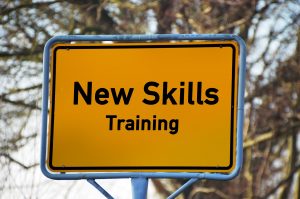“We learn cycling by doing it.” This seems simple, but the complete story is a bit more complicated. The complete story involves four points:
- Humans have two memory systems: declarative and procedural memory.
- Declarative and procedural memory are located in different areas of the brain.
- Motor skills must continuously be re-learned.
- Declarative memory is conscious and procedural memory is unconscious.
These four points will now be discussed in more detail.
1. Declarative and procedural memory
Declarative memory contains everything that we have learned by experiencing it or by hearing/reading about it (tv programs, books, lectures, …). And procedural memory contains everything we have learned by doing it. Procedural memory is the basis for all motor skills such as cycling, swimming and playing tennis.

Declarative and procedural memory differ with respect to how a memory trace comes about: a declarative memory trace typically needs only a single experience to become established, whereas a procedural memory trace is never associated with only a single experience. For example, some events in our lives we can recollect perfectly, even though they occurred only once. But our current cycling, swimming, and tennis skills are the result of a long history of practice; after every exercise the old procedural memory trace is adjusted a little bit.

This has an important implication for the interventions that target the improvement of cycling skills: practice is required. This practice does not have to be identical; ideally, the skill target is adjusted in the course practice, such that it fits with the current skill level of the cyclist. There are multiple reasons for keeping our cycling skill at an appropriate leven, and we discuss these reasons further down this page.
2. Where are the declarative and the procedural memory located in the brain?
![[Public domain], via Wikimedia Commons](https://ikblijffietsen.nl/wp-content/uploads/2018/05/Gray739-emphasizing-hippocampus-300x227.png)
The deterioration of our memory with age is largely limited to the declarative memory; the brain structures that are responsible for the procedural memory maintain their functionality to a higher age. It is therefore possible to improve the motor skills required for cycling up to old age.
3. Why do motor skills have to be learned over and over again?
By repetition the cerebellum learns the pattern of movements needed to keep the bicycle in balance and to control it. The cerebellum uses this learned pattern to send signals to the motor cortex and to support it in this way. This results in faster and better coordinated movements.
The precise adjustment of the motor cortex must therefore be learned. The cerebellum learns this adjustment on the difference between perceived and predicted sensory feedback. We have previously called this difference the “sensory discrepancy”. If the sensory discrepancy is large, then a signal goes to the cerebellum that alters the existing neuronal connections. These altered neuronal connections result in a better adjustment of the motor cortex.
Learning again (re-learning) is necessary because the sensory discrepancy changes over time, and the following factors are responsible:
- Our senses change with age, and therefore also the feedback they give about our bodies. This is especially true for our vestibular (balance) organ.
- Our reaction time, muscle strength and flexibility change with age. As a result, the predicted proprioceptive feedback becomes less accurate.
- We sometimes switch to a different type of bicycle (e.g., a heavier and faster e-bike), and this gives a different sensory feedback than the one that was predicted on the basis of our experience with our old bicycle.
4. Are the declarative and the procedural memory conscious or unconscious?
The declarative memory is conscious. For example, if we are asked to tell what we have done during the last holiday, then the answer is almost automatic. But if we are asked how we cycle, swim or play tennis, then the answer is much more hesitant. We can all describe events in which we cycled, swam or played tennis, but we cannot provide the details about how we carry out these activities. That is why we say that the procedural memory is unconscious.

Once you have mastered a skill, you are usually not aware that you are calling upon it. This is evident, for example, from the fact that experienced cyclists and tennis players can have a conversation while cycling or playing tennis. We then say that experienced cyclists and tennis players do not need their attention to cycle or play tennis. This does not apply to inexperienced cyclists and tennis players; they need their full attention. This is consistent with our knowledge of the functioning of the cerebellum: as long as the cerebellum does not yet know which pattern of movements is necessary to keep the bicycle upright and to steer it in a particular direction, the motor cortex must be controlled by the premotor and the prefrontal cortex. Control from the prefrontal cortex requires attention. Attention may not be required in simple situations and at low speed, but it certainly is needed in challenging situations and at high speed. In other words, thanks to the cerebellum, a number of motor skills are automated to a certain extent. As long as you stay within the limits of your automatisms, you can also focus your attention on another task.